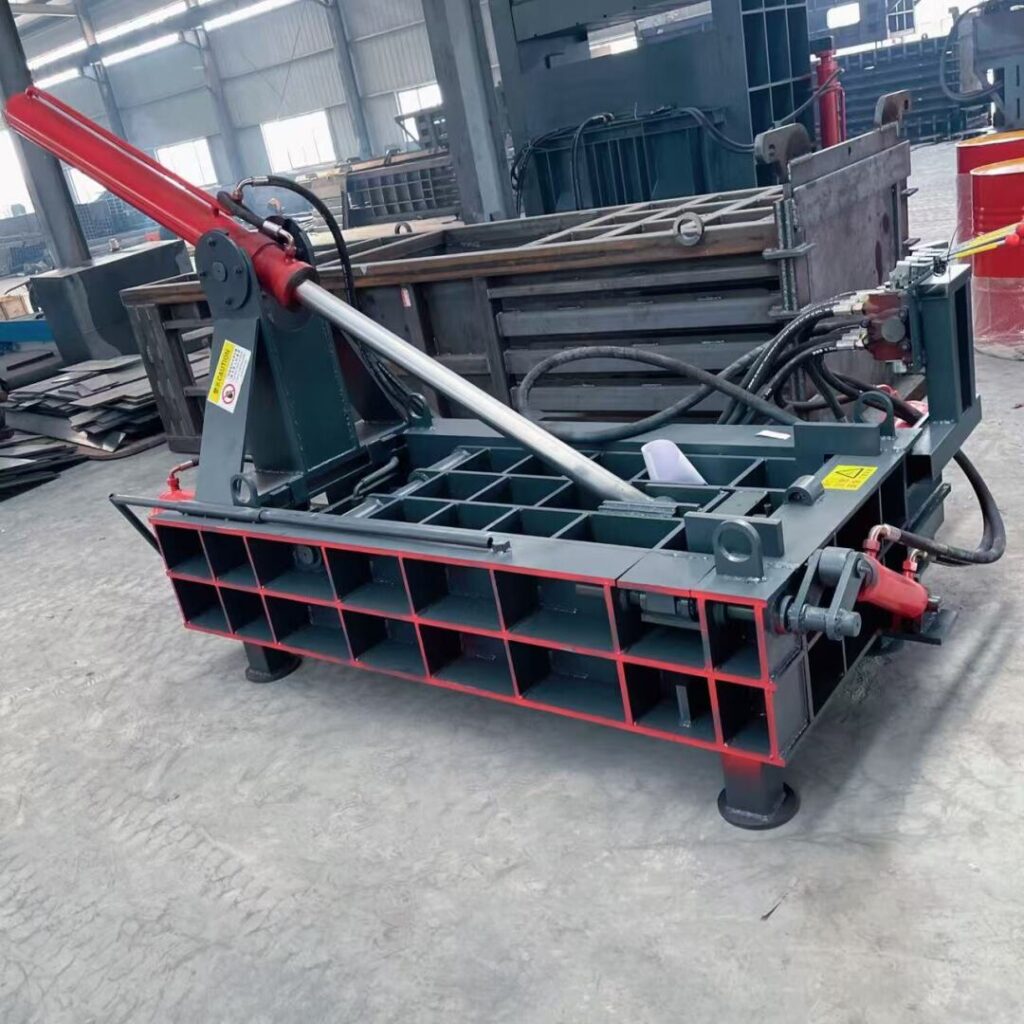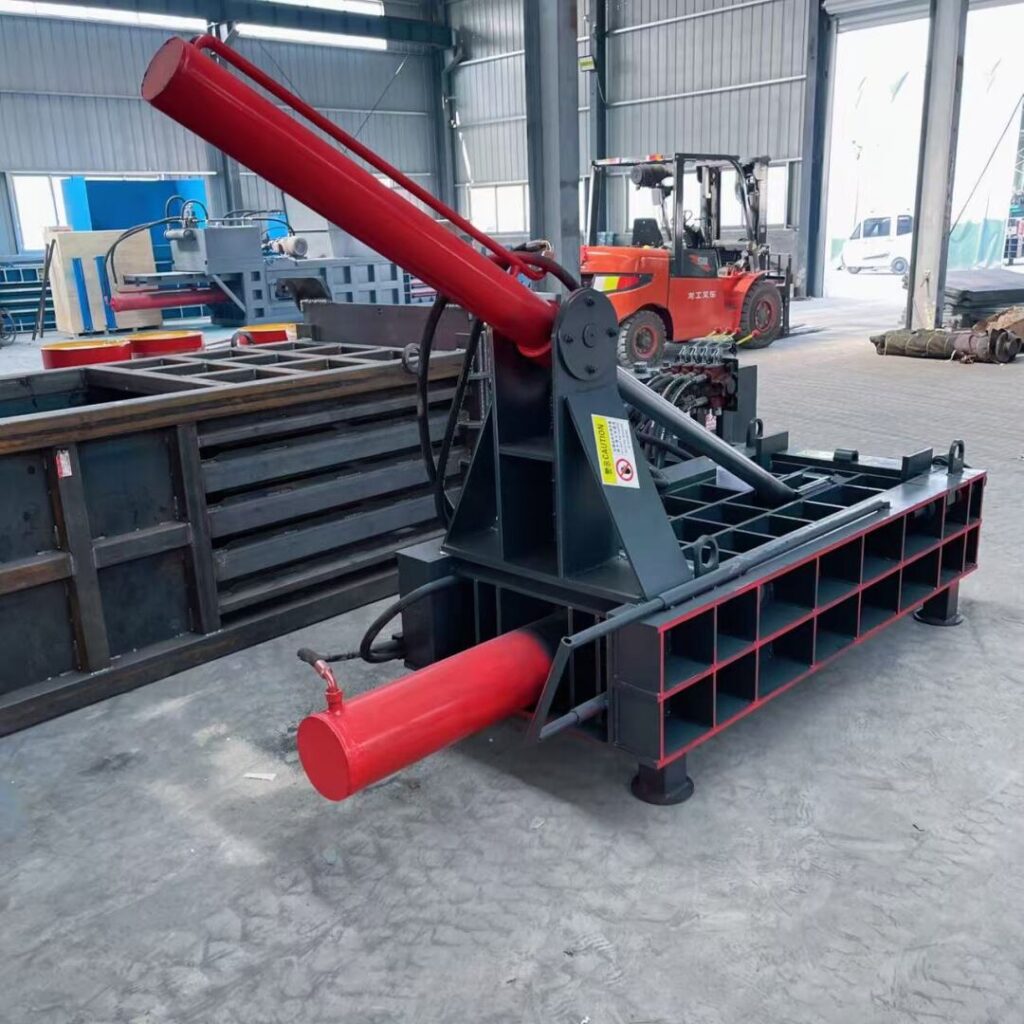In the fields of metal recycling, scrap processing, smelting plants, and renewable resource enterprises, metal balers have become essential equipment for improving operational efficiency and reducing transportation costs. Faced with a wide range of models and configurations on the market, many procurement managers often encounter the same challenge: How to choose the right metal baler that truly meets their production needs?
This article provides a systematic procurement guide to help enterprises avoid blind investments, make informed decisions, and purchase a metal baler that offers high cost-performance, long service life, and low maintenance.
I. Identify Your Enterprise’s Production Needs
Before making a purchase, enterprises must first clarify their own requirements:
-
Types of Materials: Are you processing scrap steel, aluminum profiles, copper offcuts, or mixed scrap?
-
Production Scale: Daily processing capacity, operating frequency, and work shifts.
-
Output Requirements: Desired bale density, size specifications, and transportation methods (container or truck).
-
Site Restrictions: Plant height, floor load capacity, and power supply.
👉 The clearer your requirements, the more accurately you can match the machine type and avoid being either “over-equipped” or “underpowered.”
II. Comparison of Common Metal Baler Types
1. Vertical Metal Baler
-
Features: Simple structure, small footprint, suitable for small to medium recycling stations.
-
Advantages: Cost-effective, easy to operate.
-
Disadvantages: Lower efficiency, best for lightweight materials.
2. Horizontal Metal Baler

-
Features: High level of automation, supports continuous feeding and bale discharge.
-
Advantages: Ideal for large output and high-density bales; significantly reduces labor costs.
-
Disadvantages: Higher investment cost, requires more space.
3. Fully Automatic Metal Baler
-
Features: Automatic feeding, automatic baling, intelligent control system.
-
Advantages: Highest efficiency, minimal labor required; suitable for large and medium-sized scrap processing enterprises.
-
Disadvantages: Highest price, higher maintenance requirements.
4. Used/Refurbished Metal Baler
-
Features: Lower price than new machines, can operate normally after inspection and refurbishing.
-
Advantages: Suitable for businesses with limited budgets or lower capacity needs.
-
Disadvantages: Must carefully select a reliable supplier and pay attention to warranty and after-sales service.
III. Key Selection Parameters
When purchasing, focus on the following technical parameters:
-
Compression Force (tonnage): Determines bale density and the type of metals suitable for processing.
-
Bale Discharge Method: Options include turnover, front ejection, or side push, depending on plant layout.
-
Hydraulic System: The quality of the pump and cylinders directly impacts machine durability and stability.
-
Control System: PLC intelligent control is better suited for modern production, enabling remote monitoring.
-
Energy Consumption: Opting for energy-efficient machines helps reduce long-term operational costs.
IV. Supplier Selection and After-Sales Service
For machines with similar specifications, the reliability of the supplier and service quality often determine the success of the purchase:
-
Supplier Qualification: Do they have proper manufacturing certifications and export experience?
-
Case Studies: Have they supplied equipment to large recycling plants or multinational companies?
-
After-Sales Support: Do they provide installation, training, and long-term spare parts supply?
-
Used Equipment: Was it rigorously tested, refurbished, and sold with warranty coverage?
V. Practical Procurement Tips
-
Budget Allocation: Don’t just focus on the purchase price; also consider electricity consumption, labor, and long-term maintenance costs.
-
On-Site Inspection: Whenever possible, visit the factory or customer sites to see the machine in operation.
-
Trial Runs: Test the equipment with different materials to verify performance.
-
Contract Terms: Ensure the warranty period, after-sales service, and spare parts supply are clearly defined.
Conclusion
Choosing the right metal baler is not just a one-time purchase—it is an investment in efficiency, cost control, and long-term growth. By following the four steps—define needs → compare machine types → check core parameters → evaluate supplier services—enterprises can make rational decisions in a complex market.
The right baler can transform scrap into value, make transportation more efficient, and enhance your business competitiveness.

